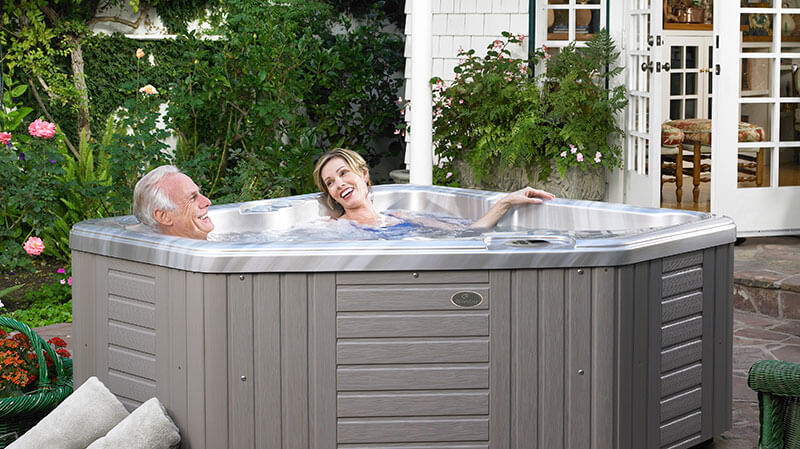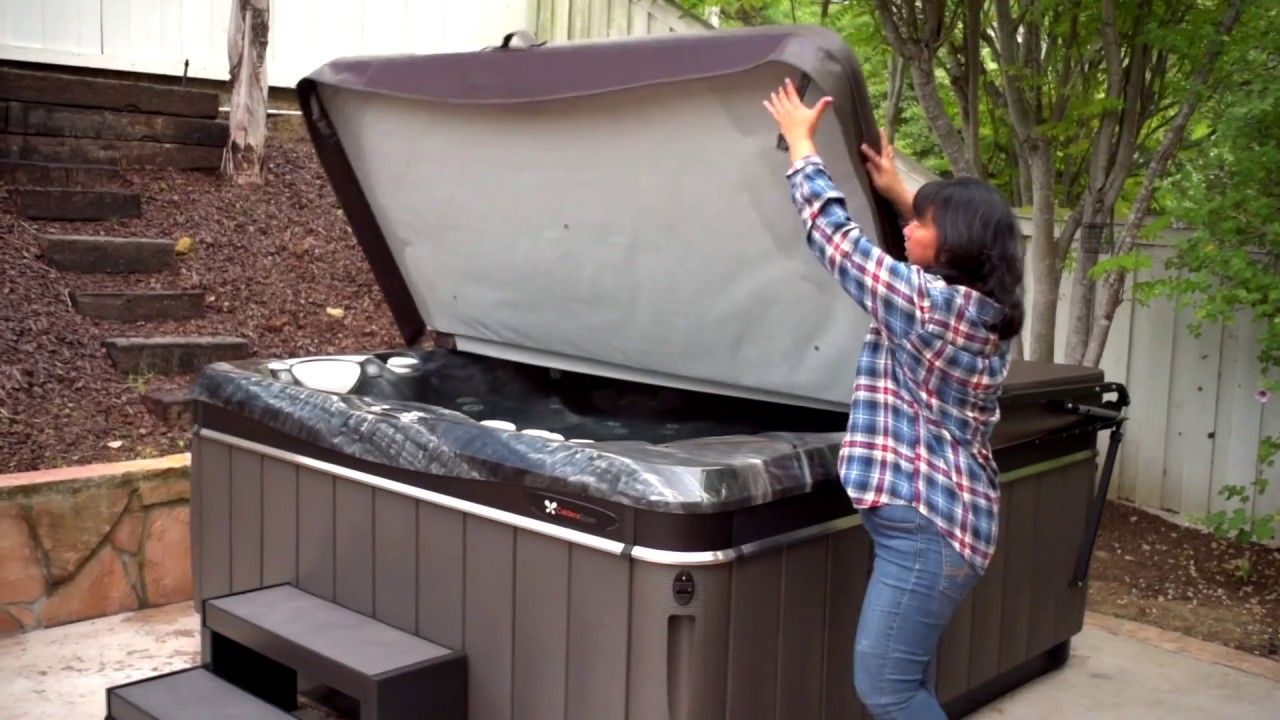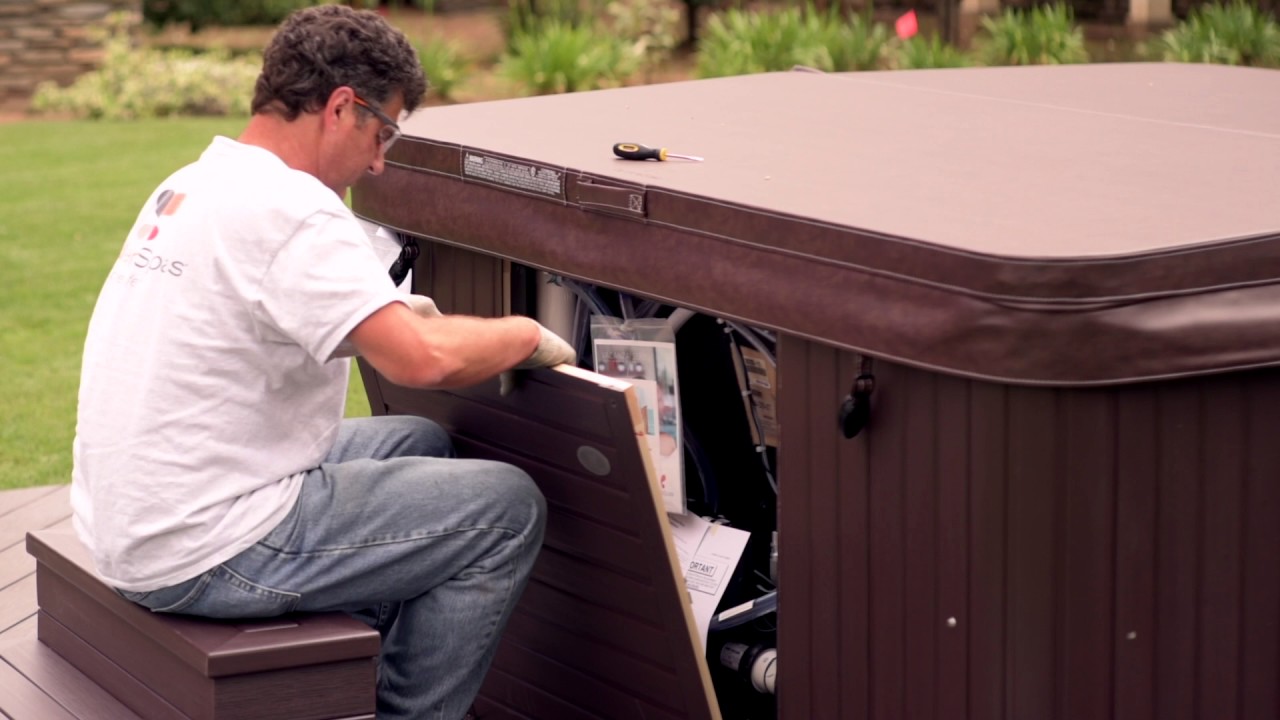
Delaware’s sweltering summer months bring endless opportunities for backyard relaxation, but they also present unique challenges for summer hot tub water maintenance. As temperatures soar and humidity levels climb, your spa’s water chemistry faces conditions that can quickly throw everything out of balance. From increased bather loads during summer gatherings to the effects of Delaware’s coastal climate, maintaining crystal-clear, safe water requires a strategic approach beyond your typical maintenance routine.
Understanding how Delaware’s distinctive summer climate affects your hot tub chemistry is the first step toward ensuring worry-free soaking all season. With the proper knowledge and consistent care, you can keep your Hot Spring® or Caldera Spas® hot tub operating at peak performance despite summer’s challenges.
Delaware’s Unique Summer Climate Challenges
Delaware’s position along the Atlantic coast creates a humid subtropical climate that significantly impacts summer hot tub water maintenance. Delaware is humid and temperate, with average high temperatures of 86°F (30°C) in July and average precipitation of about 5.5 inches (140 mm) in August. This combination of heat and moisture creates several specific challenges for hot tub owners.
The coastal regions can experience oppressive heat due to higher humidity than the interior, with average annual humidity between 63% and 68%. This elevated humidity affects evaporation rates in your hot tub, altering chemical concentrations more rapidly than in drier climates. According to research on evaporation and climate, the lower the relative humidity, the drier the air, and the higher the evaporation rate. The more humid the air, the closer the air is to saturation, and less evaporation can occur.
Summer also brings increased usage as families and friends gather for outdoor entertainment. The higher bather-to-water ratio during these peak usage periods introduces more contaminants like body oils, sunscreen, and sweat. Delaware’s summer storms and coastal winds can also introduce debris, pollen, and other organic matter that challenge your filtration system and water balance.
Essential Summer Water Chemistry Adjustments
Summer conditions in Delaware require more frequent attention to your hot tub’s chemical balance. According to research, reactions happen faster in warmer water, placing even more dependence on the need to maintain sanitizer levels. The elevated temperatures and increased usage create conditions where chemical reactions occur more rapidly, depleting sanitizers faster than during cooler months.
pH Management becomes critical during the summer months. The ideal pH range for hot tubs is 7.2 to 7.6, but summer conditions tend to push pH levels higher. The optimum pH balance is best kept lower in the hotter months—around 7.2 to 7.4 (rather than 7.4 to 7.8). This lower range helps compensate for the natural tendency of pH to rise in hot weather and ensures your sanitizer remains effective.
Sanitizer levels require constant vigilance during summer hot tub water maintenance. Whether you use chlorine or bromine in your Hot Spring® or Caldera Spas® system, maintain levels at the higher end of the recommended range. For chlorine, target 3-5 ppm, while bromine should be maintained at 4-6 ppm. A sanitizer level of 3 to 5 ppm in your hot tub is always recommended, but summer conditions often demand the higher end of this range.
Alkalinity balance serves as your pH buffer and should be maintained between 80 and 120 ppm. Proper alkalinity levels prevent rapid pH swings, which are common during summer’s temperature fluctuations and heavy usage periods.
Calcium hardness management becomes more critical in summer heat. Maintain levels between 150-300 ppm to prevent scale buildup, which accelerates in higher temperatures.
Testing Frequency: The Summer Difference
Your testing routine must intensify during Delaware’s humid summer months. You should test your hot tub water at least once a week, paying close attention to the chlorine or bromine levels and the pH. However, summer conditions demand more frequent testing.
However, if you use your hot tub more frequently or are in an environment where it is likely to collect debris, such as leaves or bugs, testing 2-3 times per week is advisable. Given Delaware’s coastal environment and summer storm activity, testing during peak usage periods every other day ensures you catch problems before they escalate.
The rapid chemical reactions in summer heat mean that what was balanced yesterday might be completely off today. For every 8 degrees Celsius increase, the chemical reaction time is twice as fast. This accelerated chemistry explains why summer hot tub water maintenance requires vigilant monitoring.
Common Summer Water Quality Issues and Solutions
Cloudy water tops the list of summer hot tub water maintenance challenges. Increased usage, higher temperatures, and inadequate filtration often create this problem. Cloudy or murky water might suggest the presence of suspended particles, which can be due to factors like inadequate filtration, high pH levels, or insufficient cleaning. Address cloudiness immediately by shocking the water, cleaning filters, and adjusting pH levels.
Algae growth becomes more likely in summer’s warm, humid conditions. Green-tinted water indicates the presence of algae, which thrives in warm water with insufficient sanitizer levels. Prevent algae by maintaining proper sanitizer levels and shocking weekly or after heavy usage.
Foaming frequently occurs during summer entertaining when multiple bathers introduce body lotions, sunscreens, and detergents. Foam formation can result from organic matter, such as beauty products, detergents, or other chemicals that should not be in your hot tub. Encourage pre-soak showers and consider using a defoamer product when necessary.
Strong chemical odors during summer often indicate chloramine buildup rather than excess chlorine. It’s important to note that if you smell chlorine, it means you don’t have enough in your water because it has been used up. Address this by shocking the water to break down chloramines and restore effective sanitization.
Maintaining Your Investment All Summer Long
Successful summer hot tub water maintenance in Delaware requires adapting your routine to meet the unique challenges of coastal humidity, increased usage, and elevated temperatures. You can ensure safe, crystal-clear water throughout the season by understanding how these factors affect your spa’s chemistry and adjusting your testing frequency, filtration schedule, and chemical management accordingly.
Remember that consistent attention to water chemistry protects both your health and your Hot Spring® or Caldera Spas® investment. Don’t hesitate to visit our knowledgeable team at our Lewes or Millsboro locations for professional water testing and personalized maintenance advice. Proper summer hot tub water maintenance lets you enjoy refreshing, worry-free soaking all season long.




